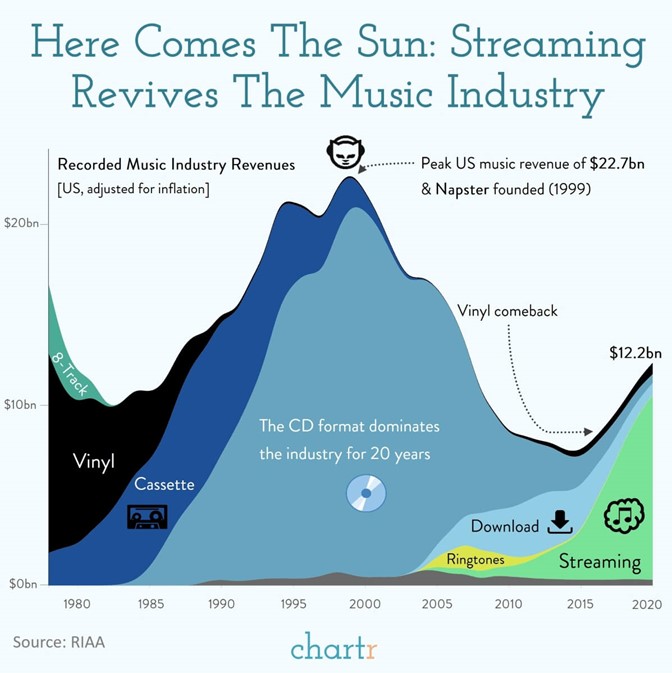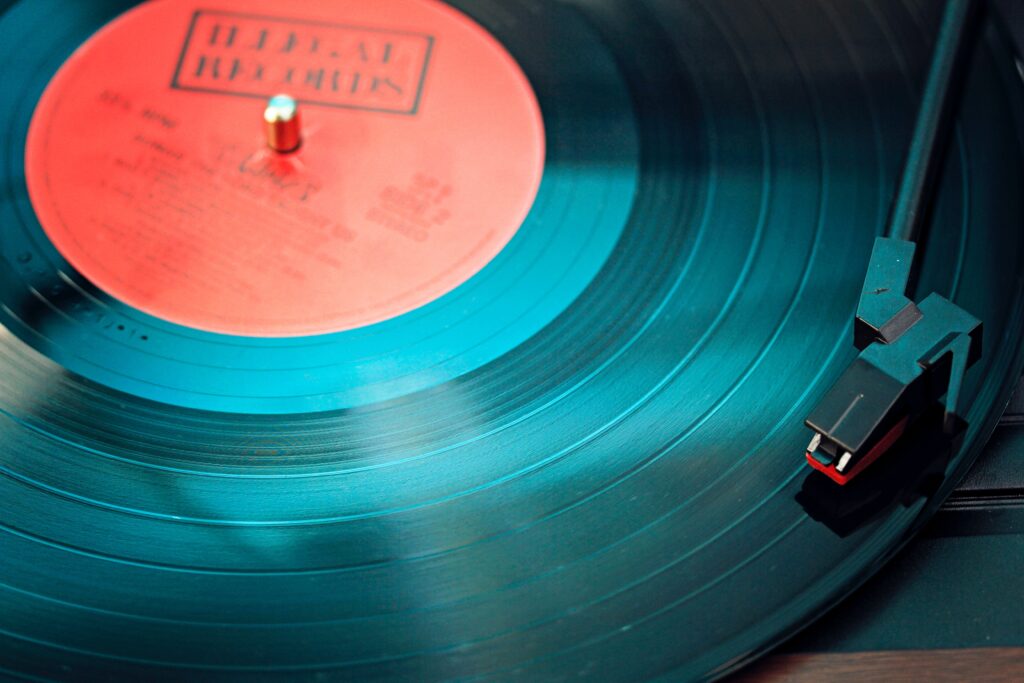Like many people, in the depths of the first COVID-19 lockdown I picked up a new hobby. Nothing too wild, but with no real excitement week to week and nothing much to spend money on, I belatedly got into listening to vinyl. I listen to a lot of music, but in the past I’d avoided vinyl because I knew it’d be an expensive hobby – and because I already have a huge amount of music at home in physical and digital formats. But as the long lockdown progressed I pulled out the old Technics turntable I’d found by the side of the road, and started checking out first pressings, limited reissues and lists of “the 100 records you must own.” And obviously I’m far from alone, with industry figures showing vinyl sales continuing to grow even in the face of increasing amounts of time spent listening to streaming sources.

As a researcher, listening to records in the time of Spotify and SoundCloud is fascinating listening behaviour. Virtually all the music you can find on vinyl is already available in other formats, most of which are more convenient, versatile and durable than records. You can already listen to your favourite songs and albums on your phone, in the car, and in every room of your house. They’re available on a range of streaming platforms, remixed, remastered and in super high fidelity, and as part of comprehensive playlists designed to help you discover more music that you’ll love from the same artists or with a similar sound. So what’s the appeal of buying and listening to the same music in a rigidly physical format?
There’s an argument that vinyl sounds better than digital formats; but that aside the physical ritual of listening is a key difference from other formats, and something that many listeners love. Rather than scrolling down a list of tracks, there’s pulling the record out of its sleeve, checking which side it is, instinctively blowing across it for no particular reason, and carefully placing the needle.
Records also provide a different listening experience. For starters they’re linear, reflecting traditional views of what a record should be – you can’t pause, skip or shuffle tracks, instead you’re playing an entire side in the order it was originally compiled. And the physical nature of the format (most obviously, having to remove needle and record when it’s finished) means I’m never too far from the record player when I’ve got an LP on. Listening to the same album on Spotify is a complete contrast: you can skip the song you don’t like, replay the one you love, pause while you answer the phone, and have it all streamed seamlessly wherever you are through your smart speaker or smartphone.
This is all really obvious stuff, but it illustrates just how much listening behaviour can differ, even when listening to the same content in a different format. And as researchers we know that experience shapes occasion and vice versa. In practice that means I personally tend to listen to a record when I know I can sit down and listen to the whole thing – a proper listening “occasion,”, if you like, generally in the evening when I’m unwinding. Conversely most of my everyday listening habits, while I’m working or doing other things around the house, is generally through digital sources – even if it’s the exact same music.
Those distinctions between listening occasions extend further, with different types of audio content for different settings or activities. For example, low-key electronic music can be pretty good background when you’re trying to concentrate; and research suggests that higher-tempo music helps boost performance when at the gym or working out. And while I have friends who like to listen to podcasts when they’re working, I prefer to do so when I’m cooking, in the car, or on public transport – times when I have a bit of time to really listen and get into what’s being said.
In addition to being of interest to researchers, this listening behaviour – like so many consumer behaviours – also has significant implications for marketers. Across the advertising industry audio is often treated as a relatively homogenous medium; but it’s clear that to listeners not all audio is the same. Everyone has their own individual preferences, but fundamentally we listen to different things in different ways, at different times of day and while doing different things. And how we respond to what we’re hearing – in terms not just of audio content but also any advertising content around it – is a function of where we’re listening, our mindset and what else we’re doing at the same time.
For advertisers, therefore, it’s important to understand these behaviours, and how their own advertising fits into them. Choosing the right channels and content for specific ads is vital; but so is considering listeners’ mode and mindset as they’re listening. If they’re more likely to be relaxing and unwinding as they listen, would a brand ad be more suitable than lower-funnel or direct response creative? Alternatively, is the campaign relevant to activities listeners are likely to be doing – cooking, for example, or thinking about travel? The ideal solution varies from campaign to campaign, but tools such as targeting and dayparting are invaluable in ensuring campaigns reflect these nuances, and delivering better engagement.
Sadly for me the occasions when I can sit down and put on a record are few and far between; but it remains a real treat, and something very distinct from my other listening habits. Now, if you’ll excuse me, I’m off to check out a limited 180gm pressing of an Al Green album…
